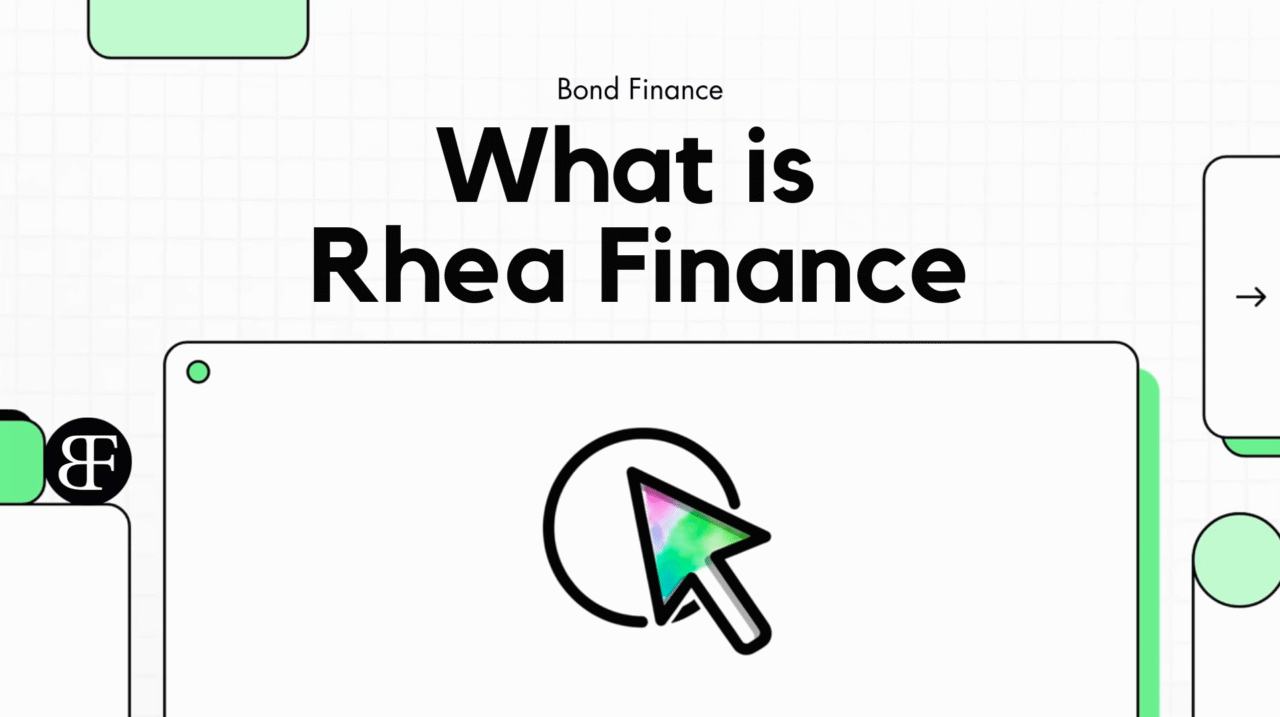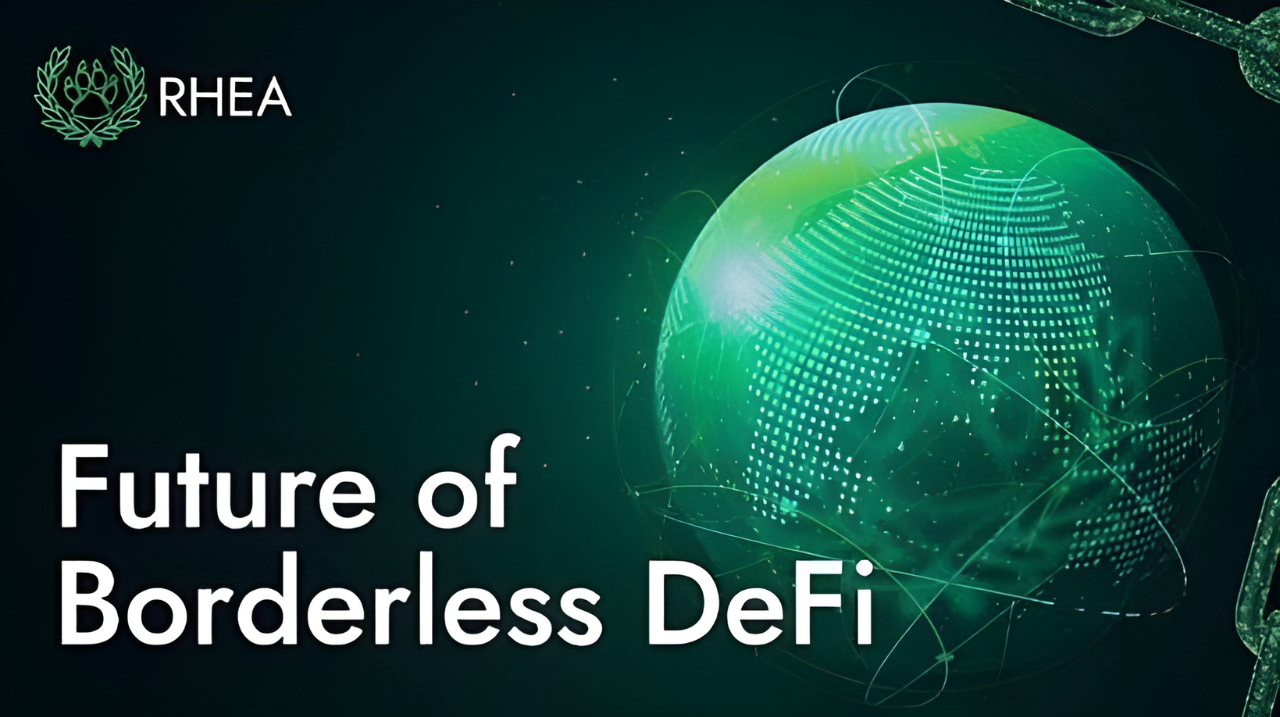RHEA Finance: What Happens When NEAR’s Biggest DeFi Protocols Merge?

Overview
What happens when you take NEAR Protocol’s two most dominant DeFi protocols and merge them into a single, turbocharged liquidity engine? You get RHEA Finance—the strategic combination of Ref Finance and Burrow Finance, reimagined as NEAR’s primary liquidity hub and chain-abstracted DeFi layer.
This isn’t just a rebrand with a fresh coat of paint. RHEA represents a fundamental consolidation of NEAR’s decentralized exchange and lending infrastructure, designed explicitly to support the next wave of DeFi innovation on one of crypto’s most technically sophisticated blockchains. By unifying these battle-tested protocols under one roof, RHEA creates a composable foundation where protocol-level integrations and community incentive mechanisms work seamlessly together.
At its core, RHEA operates as a dual-pillar platform. The DEX side delivers automated market maker functionality with permissionless pool creation, customizable fees at the pool level, robust slippage protection, and intelligent multi-hop routing that finds liquidity across fragmented pools. The lending side provides over-collateralized borrowing with asset-specific volatility assessments, dynamic interest curves optimized for capital efficiency, open liquidation mechanics, and flexible incentive structures that reward both lenders and borrowers.
What makes RHEA particularly compelling is its advanced service layer built atop these foundations. Stable swap pools leverage hybrid constant-sum and constant-product formulas to minimize slippage for correlated assets. Degen pools use price oracles to extend stable-pool economics to any token pair with significantly less required TVL. The discretized concentrated liquidity pools effectively function as decentralized order books, satisfying AMM makers, takers, and limit-order traders within a single system. Smart routing continuously tracks pool depth and fee structures, automatically splitting trades across optimal paths to maximize output.
Perhaps most innovative is how RHEA bridges these services. Liquidity providers can use their LP tokens as collateral in the lending markets without interrupting staking rewards—enabling triple-layered yield from swap fees, farming incentives, and supply interest simultaneously. Margin trading integrates both sides of the platform to offer up to 3x leverage on spot markets. The universal Boost Farming platform supports any NEP-141 token as both seed and incentive, with multi-farming capabilities and boost tokens that amplify rewards based on lock-up duration.
Innovations and Expansion
RHEA’s founding vision centers on establishing NEAR as the legitimate home for sophisticated DeFi activity—a mission that requires more than incremental improvements. The platform showcases NEAR Protocol’s core technical innovations, particularly chain abstraction and AI-powered frameworks, by delivering composable products that create genuine utility across the DeFi stack.
The technical architecture reveals meaningful differentiation. While most DEXs force users into standardized pool structures, RHEA’s permissionless creation model lets anyone deploy custom pools with tailored fee configurations—even if identical token pairs already exist. The discretized concentrated liquidity implementation goes beyond typical concentrated liquidity models by combining dramatically higher capital efficiency with limited and predictable impermanent loss, all while providing pure decentralized order-book functionality within the AMM framework. This isn’t theoretical; it’s live infrastructure processing real volume.
On the lending side, RHEA’s multi-dimensional risk assessment treats each asset according to its actual volatility profile rather than applying blanket collateral ratios. Dynamic interest curves adjust in real-time to optimize utilization rates, ensuring capital doesn’t sit idle while maintaining protocol stability. The open liquidation model distributes risk across participants rather than concentrating it in privileged keeper bots—a design choice that enhances both security and decentralization.
Cross-service innovations extend RHEA’s reach beyond crypto-native users. The Aggregate Bridge layer integrates mainstream bridge protocols into a single interface with automatic path selection based on cost, speed, and security—eliminating the friction of comparing multiple bridging options manually. Apollo Pool offers one-click single-asset staking strategies that achieve high yields without requiring users to provide paired liquidity or manage impermanent loss exposure. The Vault system powered by Shade Agent leverages AI to analyze on-chain behavior and recommend personalized yield strategies across multiple networks, with Telegram notifications keeping users informed of performance and optimization opportunities.
Perhaps the most significant expansion play is Satoshi Defi, which brings Bitcoin users into NEAR’s ecosystem using only their native BTC wallets. By leveraging NEAR’s chain abstraction technology, the platform enables Bitcoin holders to bridge assets and control NEAR accounts seamlessly—opening DeFi participation to an entirely new user base without forcing them into unfamiliar wallet infrastructure.
Ecosystem and Utility
The tokenomics architecture operates through a three-token structure designed to align incentives across different participant types. RHEA is the base asset with a fixed supply of one billion tokens, serving as the primary utility and governance token. It captures value from all platform activity—lending, trading, and treasury operations—and functions as the conversion target for earned rewards.
xRHEA represents staked RHEA and unlocks advanced functionality across the protocol. It’s non-transferable, signaling long-term commitment while serving multiple roles: earning staking incentives, functioning as gas within the RHEA ecosystem, boosting yield multipliers, and acting as collateral in lending markets and partner protocols. Critically, xRHEA holdings determine a user’s on-chain reputation, which directly impacts their conversion ratio when claiming rewards.
oRHEA is the reputation-based incentive token earned through active participation—liquidity provision, lending, borrowing, and ecosystem activities weighted by contribution value. It’s non-transferable and convertible to RHEA at ratios up to 1:1 based on the user’s reputation score, calculated from xRHEA balance and holding duration. This replaces traditional points systems with a mechanism that rewards sustained engagement rather than mercenary farming.
The token distribution reflects genuine long-term alignment. The team and advisors hold 11.8% subject to a six-month cliff followed by thirty months of linear vesting—zero tokens unlocked at launch. REF and BRRR conversion accounts for 37%, honoring the legacy communities. Airdrop and incentives represent 30.6%, with liquidity provision at 8.6%, marketing at 6%, and the treasury at 6%. This structure eliminates insider liquidity at TGE while ensuring sufficient resources for sustainable growth.
The economic flywheel operates across multiple value accrual layers. Traders pay swap fees distributed to liquidity providers, who stake LP tokens to earn additional incentives while maintaining liquidity depth. Stakers earn protocol fees in the form of oRHEA, which they convert to RHEA at rates determined by their reputation—incentivizing longer holding periods and deeper ecosystem participation. Borrowers access capital while paying interest to lenders, with both sides earning additional rewards for platform utilization.
Governance flows through the DAO structure, with xRHEA holders voting on protocol parameters, incentive allocations, and strategic direction. This decentralized management model ensures community input on treasury deployment, partnership integrations, and feature prioritization—though full DAO involvement details will be revealed following token generation.

Bottom Line
RHEA Finance represents NEAR Protocol’s most serious attempt to consolidate and scale its DeFi infrastructure against competition from Solana, Base, and other high-performance chains. By merging Ref Finance and Burrow Finance—protocols with established track records and real user bases—RHEA enters the market with existing liquidity, proven technology, and community legitimacy rather than launching from zero.
The proof points that matter are technical and structural. The platform processes actual volume through discretized concentrated liquidity pools that outperform standard AMM designs on capital efficiency. The lending markets operate with live assets and open liquidation mechanics that have withstood market stress. The three-token economic model with reputation-weighted rewards creates genuine stickiness rather than temporary yield-chasing behavior. The team’s thirty-month vesting schedule with zero TGE unlock demonstrates alignment that most projects won’t commit to.
What makes RHEA potentially sustainable beyond hype cycles is its focus on composability and real utility rather than isolated features. LP tokens functioning as collateral without interrupting farming rewards, margin trading that integrates both DEX and lending infrastructure, AI-powered vault recommendations backed by on-chain behavioral analysis—these aren’t marketing gimmicks but functional integrations that increase capital efficiency and user retention. The Bitcoin bridge strategy could genuinely expand addressable markets if execution delivers on the promised frictionless experience.
Critical dependencies center on NEAR Protocol’s continued development and adoption of chain abstraction technology, which underpins several key features. Execution risk exists around DAO governance effectiveness post-TGE and the challenge of maintaining community cohesion after merging two separate token holder bases. Competition from established multi-chain aggregators with deeper liquidity pools and more extensive partnership networks remains formidable. The reputation-based conversion mechanics for oRHEA introduce complexity that could confuse users accustomed to simpler reward structures.
Yet the genuine potential lies in RHEA’s positioning as foundational infrastructure rather than just another DeFi app. By serving as the liquidity layer for other NEAR projects, providing protocol-level integrations, and building cross-chain bridges that expand rather than fragment liquidity, RHEA could become genuinely embedded in the ecosystem’s growth trajectory. That’s not a guarantee—it’s a strategic bet on NEAR’s technical advantages translating into market share gains. But it’s a bet backed by actual products, committed teams, and architectural decisions designed for long-term viability rather than short-term token pumps.



 Nov 02,2025
Nov 02,2025  By Joshua
By Joshua 






